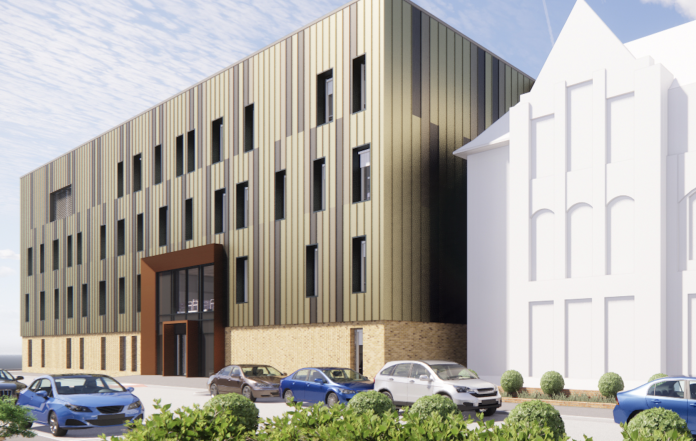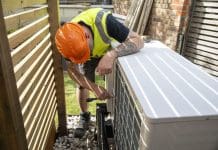Premier Modular has been awarded a £21m contract to construct a new outpatient service building at King’s College Hospital in London
The four-storey outpatient service building is Premier’s largest single healthcare project in its 65-year history.
The large-scale building will be constructed offsite, and will allow the Trust to free up space within the main hospital to help reduce waiting times and improve patient experience for urgent care services.
Premier will lead the project team, which includes delivery partner Claritas, P+HS Architects, and M&E specialists, TClarke.
The new outpatient services building will provide 48 purpose-designed consultation rooms, and eight procedure rooms for a range of services, including dermatology, rheumatology, respiratory, neurosciences, pain management, and urology as well as other aspects of surgery and therapies.
‘Offsite construction is safer, quieter, and cleaner’
Dan Allison, divisional director at Premier Modular, said: “The use of an offsite solution for this project will ensure faster delivery and earlier occupation, to the benefit of patient care.
“Offsite construction is safer, quieter, and cleaner than in-situ construction, which will radically reduce disruption during the build phase to staff and patients, and the surrounding residential community.
“This type of building solution is also enormously beneficial on restricted hospital sites such as this, reducing the amount of plant, materials, and vehicle movements to site by undertaking as much work in the factory as we can.
“The new building has access roads to three sides and is immediately adjacent to the Normanby Building.
“We are working to a short programme to bring these state-of-the art facilities into use as early as possible this year, to the benefit of patients and to assist with the rising demand for hospital services.”
‘Minimise the impact on the environment’
Stephen Hatcher, associate at P+HS Architects commented: “The building is designed to minimise impact on the environment over its life and is targeting a BREEAM excellent rating.
“It will have areas of green roof to encourage biodiversity, a highly insulated building fabric to reduce heat loss and running costs, energy-efficient ventilation and electric air source heat pump system for heating, and solar panels for electricity generation.”
The design for the building was informed by the existing buildings on the hospital campus.
A double-height feature entrance will provide visibility externally and allow high levels of natural light for the reception and waiting area.
Developed in collaboration with clinicians and patient representatives, the interior design will be crisp and modern, whilst assisting patients with sensory needs. To maintain patient flows, the new facility will be linked to the Normanby Building at ground floor level.














